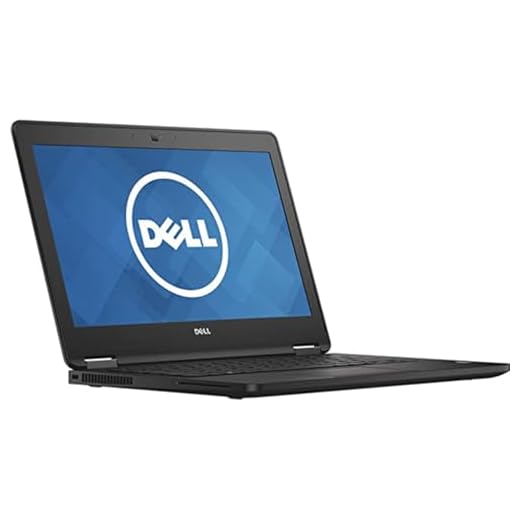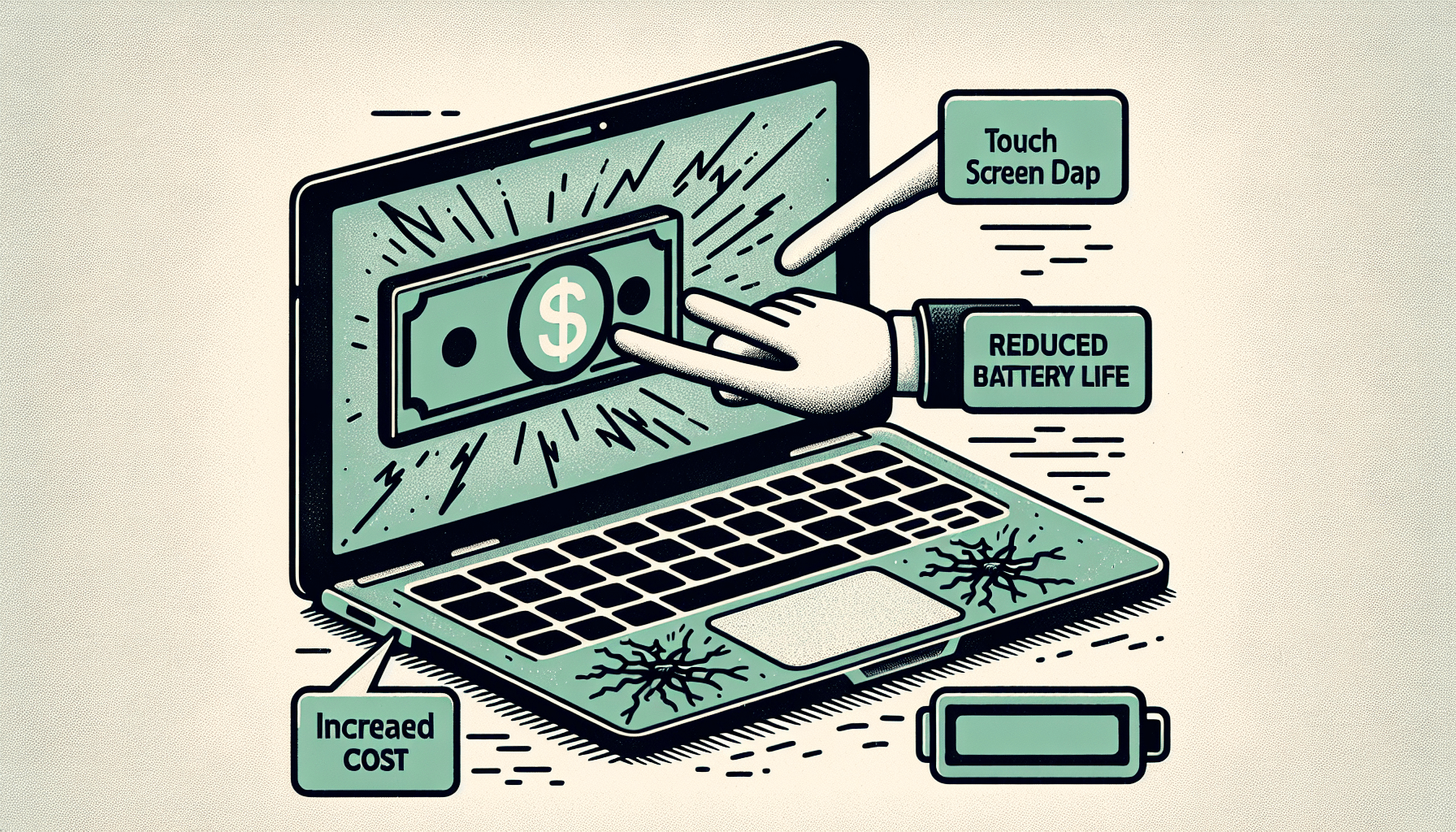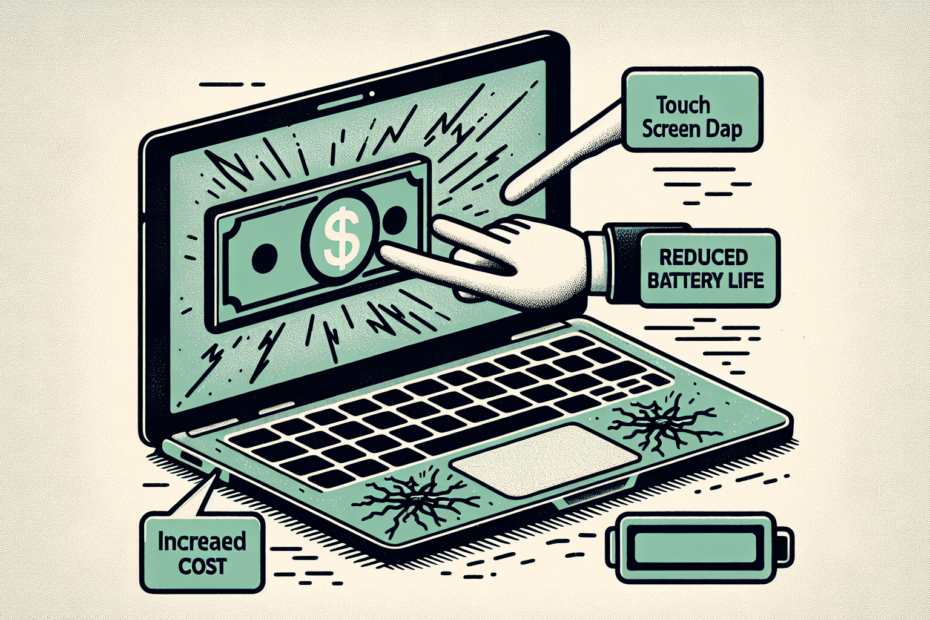







In this article, you will discover the reasons why purchasing a touch screen laptop may not be the best choice for you. While touch screen technology has become increasingly popular in recent years, it’s essential to weigh the potential drawbacks that come with it. From increased costs to potential screen fatigue, understanding these factors can help you make an informed decision when it comes to investing in a new laptop. So, if you’re curious about whether a touch screen laptop is right for you, let’s explore the reasons why you might want to reconsider.

Limited functionality
Reduced typing efficiency
One of the main drawbacks of touch screen laptops is the reduced typing efficiency. While traditional laptops offer a physical keyboard that provides tactile feedback and allows for faster and more accurate typing, touch screen laptops rely on an on-screen keyboard or a virtual keyboard that pops up when needed. This can be a slower and less efficient way of typing, especially for those who are used to the traditional keyboard layout. The lack of physical keys can lead to more typos and errors, making it inconvenient for tasks that require extensive typing, such as writing reports or editing documents.
Difficult precision tasks
Another limitation of touch screen laptops is the difficulty in performing precision tasks. While touch screens are great for swiping, scrolling, and tapping, they may not be the ideal choice for tasks that require precise input, such as graphic design or detailed photo editing. The lack of precision can make it challenging to accurately select and manipulate small elements on the screen. This limitation can be especially frustrating for professionals or creatives who rely on precise movements and detailed adjustments in their work.
Lack of tactile feedback
One of the downsides of touch screen laptops is the absence of tactile feedback. Unlike traditional laptops with physical buttons and keys, touch screen laptops rely solely on touch and gestures. This lack of tactile feedback can make it difficult to know whether a button has been pressed or if a command has been registered. It also removes the sense of physical interaction and can make the overall user experience less intuitive. Without the tactile sensation, users may find themselves pressing too hard or too lightly, leading to accidental actions or incomplete inputs.
Higher cost
Higher initial cost
When compared to non-touch screen laptops, touch screen laptops generally come with a higher price tag. The inclusion of touch screen technology adds to the overall cost of manufacturing and designing the laptop, resulting in a higher price for consumers. This can be a significant deterrent for budget-conscious individuals or those who are looking for an affordable laptop option. It’s important to consider whether the added touch screen functionality is worth the extra expense, especially if there are no specific tasks or applications that require touch screen interaction.
Costly repairs and replacements
Touch screen laptops also tend to be more expensive to repair or replace in case of damage. Since the touch screen component is an integral part of the device, any issues with the touch screen can incur additional costs for repairs or replacements. Touch screens are more fragile and susceptible to cracks or scratches compared to non-touch screen displays. This vulnerability to damage can lead to costly repairs, reducing the overall lifespan and value for money of the touch screen laptop.
Limited durability
More prone to scratches and cracks
While touch screens offer a convenient way to interact with laptops, they are more prone to scratches and cracks due to their delicate nature. Unlike traditional laptops with sturdy screens that can withstand minor impacts, touch screens are vulnerable to damage from accidental bumps, drops, or even everyday wear and tear. The constant use of fingers or stylus pens on the screen can also lead to scratches over time, diminishing the visual quality and overall durability of the device. It’s important to handle touch screen laptops with care and consider investing in protective accessories such as screen protectors or cases.
Sensitive to moisture and liquids
Touch screen laptops are generally more sensitive to moisture and liquids compared to their non-touch screen counterparts. Spills or accidental contact with water can damage the touch screen functionality, rendering it unusable or requiring expensive repairs. The presence of moisture can disrupt the touch responsiveness or cause malfunctions in the touch screen sensors. This sensitivity to liquids can be a concern for those who tend to work in environments where spills or potential water damage is a possibility. It is important to exercise caution and keep liquids away from touch screen laptops to ensure their longevity and functionality.
Shorter battery life
Higher power consumption
Touch screen laptops typically consume more power compared to non-touch screen laptops. The touch screen technology itself requires additional power to operate, resulting in increased power consumption and shorter battery life. This means that touch screen laptops may need to be plugged in or charged more frequently, especially during extended use or when running demanding applications. The shorter battery life can be inconvenient for users who rely on their laptops for long periods without access to power outlets, such as when traveling or during presentations.
Frequent charging required
Due to their higher power consumption, touch screen laptops often require more frequent charging compared to non-touch screen laptops. This can be a hassle for individuals who are constantly on the go or who work in environments where power outlets may not be readily available. The need for frequent charging can disrupt productivity and limit the portability of touch screen laptops. It’s important to consider one’s usage patterns and daily routines before deciding on a touch screen laptop, as the shorter battery life and frequent charging requirements may not be compatible with certain lifestyles or work situations.

Screen visibility issues
Reflections and fingerprints
One of the common issues with touch screen laptops is the visibility of reflections and fingerprints on the screen. Touch screens tend to have glossy surfaces that can reflect ambient light, causing glare and making it difficult to see the content on the screen, especially in brightly lit environments. Additionally, fingerprints and smudges can quickly accumulate on the screen, further impacting the visual clarity. This can be distracting and hinder the overall user experience, requiring frequent cleaning and maintenance to maintain optimal screen visibility.
Glare in brightly lit environments
Touch screen laptops often suffer from glare issues, particularly in brightly lit environments or when used outdoors. The glossy screen surfaces of touch screens can reflect sunlight or artificial lighting, creating glare that can make it challenging to view the screen clearly. This can be a significant drawback for individuals who frequently work in well-lit areas or for those who enjoy using their laptops outside. The glare can strain the eyes and make it difficult to focus on the screen, ultimately impacting productivity and the overall user experience.
Additional weight
Added weight from touchscreen technology
Touch screens add extra weight to laptops compared to non-touch screen models. The inclusion of touch screen components, such as digitizers and sensors, increases the overall weight of the device. This additional weight can make touch screen laptops bulkier and more cumbersome to carry around, especially for frequent travelers or individuals who prefer lightweight devices. The added weight can also be noticeable during extended periods of use, leading to discomfort or fatigue when using touch screen laptops for extended periods.
Inconvenient for travel
The additional weight of touch screen laptops makes them less convenient for travel. Whether for business trips or personal vacations, having a lightweight and portable laptop can make a significant difference in terms of ease of transportation. Touch screen laptops, with their added weight, can be more burdensome to carry around and may take up valuable space in a bag or backpack. For individuals who prioritize portability and mobility, opting for a non-touch screen laptop may be a more suitable choice.
More susceptible to malware
Increased vulnerability to touch screen-specific malware
Touch screen laptops present an increased vulnerability to touch screen-specific malware. The touch screen interface opens up new avenues for potential malware attacks that target touch screen gestures, taps, or swipes. As touch screen technology becomes more prevalent, hackers and cybercriminals may develop malware specifically designed to exploit vulnerabilities in touch screen devices. This heightened susceptibility to touch screen-specific malware can compromise personal and sensitive information, making touch screen laptops a less secure option for users who prioritize data protection and online security.
Difficulty in virus removal
As with any computer, touch screen laptops are not immune to viruses and malware attacks in general. However, removing viruses or malware from touch screen laptops can be more challenging compared to non-touch screen models. The touch screen interface adds an extra layer of complexity in performing tasks such as scanning for viruses or running malware removal software. Without the ease of using a traditional keyboard and mouse, users may find it more difficult to navigate through menus or execute necessary commands during the virus removal process. This difficulty in virus removal can be a significant drawback for individuals who prioritize cybersecurity and want a hassle-free experience in dealing with potential threats.
Limited software compatibility
Not all software optimized for touch screen use
Not all software and applications available in the market are optimized or designed for touch screen use. While touch screen laptops can run most software made for non-touch screen laptops, the touch screen functionality may not be fully utilized or may not work as seamlessly with all programs. Older or specialized software may not have touch screen compatibility, limiting the usability and functionality of touch screen laptops. This limitation can be particularly problematic for professionals or individuals who rely on specific software for their work or hobbies and require the full functionality of their applications.
Compatibility issues with older programs
In addition to software that may not be optimized for touch screen use, touch screen laptops can also face compatibility issues with older programs or legacy software. Many older programs were not designed to be used with touch screen technology and may not recognize touch input commands or gestures. This can result in limited functionality or the inability to perform certain tasks within these older programs. Individuals who heavily rely on older software or have a need to access legacy programs should consider whether the touch screen laptop is the most suitable choice for their specific requirements.
Smudge and fingerprint magnet
Regular cleaning required
Touch screen laptops are notorious for being smudge and fingerprint magnets. The constant interaction with the touch screen using fingertips can leave behind oily residues, smudges, and fingerprints on the screen. These marks not only impact the visual clarity and quality of the display but can also be distracting and unappealing. Regular cleaning and maintenance are necessary to keep the touch screen free from fingerprints and smudges, requiring additional time and effort on the part of the user. If you prefer a clean and pristine screen without the need for frequent cleaning, a non-touch screen laptop may be a more practical choice.
Constantly visible marks on the screen
One of the inevitable downsides of touch screen laptops is the constant presence of visible marks on the screen. Despite regular cleaning and maintenance, it is challenging to keep touch screens completely free from fingerprints and smudges. These marks can affect the overall visual experience, especially when watching videos, viewing photos, or working on graphic-intensive tasks. The constant visibility of marks on the screen can be a source of annoyance for individuals who value a clean and aesthetically pleasing display. If you prioritize a pristine screen appearance, a touch screen laptop may not be the ideal choice.
Limited upgrade options
Limited upgrade possibilities for touch screen components
Touch screen laptops generally have limited upgrade options compared to non-touch screen laptops. While non-touch screen laptops often allow for upgrading various components such as RAM, storage, or graphics cards, touch screen laptops may have limited flexibility when it comes to upgrading touch screen-specific components. This lack of upgrade possibilities can limit the laptop’s potential for future enhancements and improvements. It’s important to consider whether the touch screen functionality is a long-term investment or if future upgrade options are a priority when making a purchasing decision.
Less flexibility for future enhancements
Touch screen laptops offer less flexibility for future enhancements and customization compared to non-touch screen laptops. The integration of touch screen technology often means that other components and features of the laptop may be limited or sacrificed to accommodate the touch screen functionality. This can result in fewer options for customization, such as adding additional ports, expanding storage, or upgrading certain hardware components. If you prefer a laptop that can be tailored to your specific needs and preferences in the future, a touch screen laptop may not provide the level of flexibility required.
In conclusion, while touch screen laptops may seem like an appealing choice with their modern and interactive interface, they also come with several limitations and drawbacks. From reduced typing efficiency and difficulties in performing precision tasks to higher costs and limited durability, the decision to buy a touch screen laptop requires careful consideration of your specific needs and priorities. Factors such as battery life, screen visibility, susceptibility to malware, software compatibility, and the additional weight are essential aspects to evaluate before making a purchase. Ultimately, choosing between a touch screen laptop and a traditional non-touch screen laptop depends on your individual preferences and requirements.



